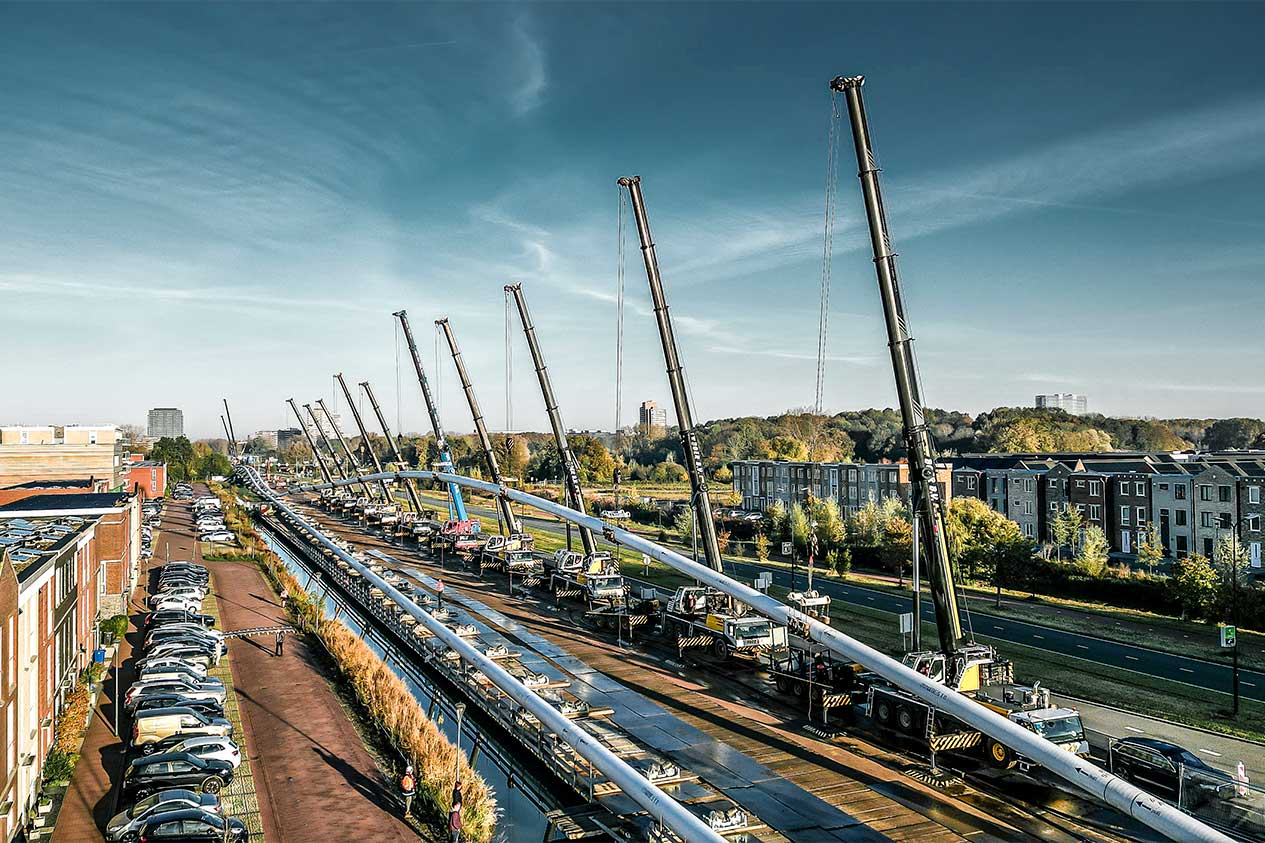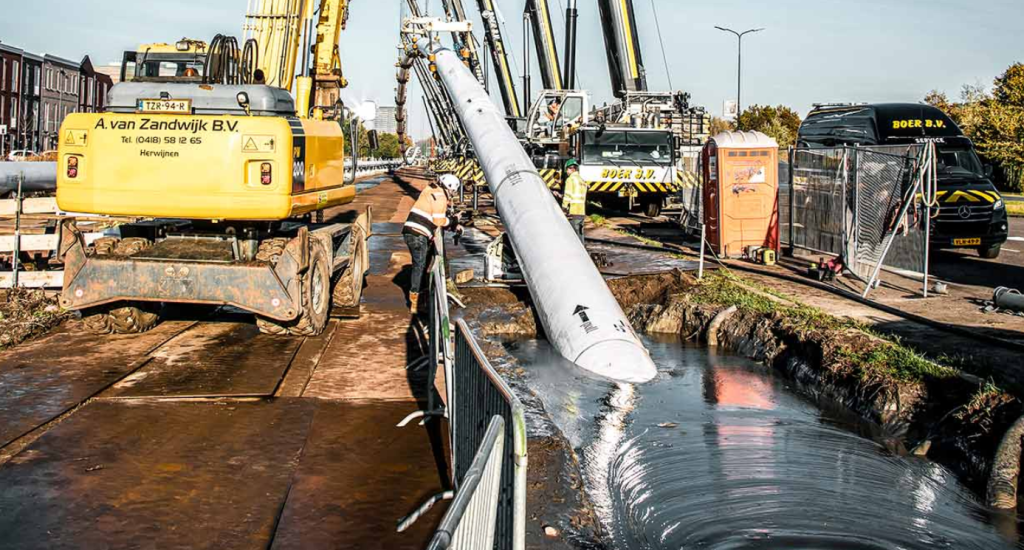
A dozen Liebherr mobile cranes recently collaborated to position a one-kilometer-long pipeline in the Netherlands. The cranes, with load capacities ranging from 90 to 400 tonnes, lifted the massive pipeline, a crucial component of the expanding district heating network in the region.
Meeting the Challenge
The energy transition in the Netherlands, driven by the European Climate Law’s commitment to achieving climate neutrality by 2050, has prompted the Dutch government to shift heating systems from natural gas to sustainable sources like district heating and electric heat pumps. The ambitious “WarmtelinQ” project, overseen by environmental manager Richard Rijbroek at Denys, aims to utilize residual heat from industry and waste incineration plants in the port of Rotterdam to warm homes and businesses in South Holland.
Rijbroek elaborates, “Preparations for the ‘WarmtelinQ’ project have been underway for three years. We will use the residual heat from industry in the port of Rotterdam and from waste incineration plants to heat homes and businesses in South Holland.”
Overcoming Obstacles
The intricate process involves drilling the one-kilometer-long district heating pipeline into the ground, even navigating under a watercourse at a depth of approximately 30 meters. One significant challenge emerged as a motorway obstructed the route, requiring careful planning and execution.

Harm van Dijk, project manager of Dutch crane operator Boer B.V., explains the complexity, stating, “To get the exact curvature, we form the arch with ten cranes. Each of these cranes lifts 18 tonnes. For this reason, we need cranes with a capacity of 90–140 tonnes here. On the other side of the motorway, we used a 300-tonne and a 400-tonne crane because of the large radius over the motorway.”
The cranes, ranging from 90 to 400 tonnes in capacity, played a pivotal role in lifting the pipeline to the required height for drilling into the ground.
District Heating Dynamics
District heating, a key aspect of the energy transition, involves harnessing heat as a by-product from power stations or waste incineration plants. This heat is then distributed through highly insulated pipes in the form of hot water, primarily serving private households. This sustainable heat generation contributes to reducing CO₂ emissions.

Unmatched Expertise
Preparation for such intricate operations is crucial, as highlighted by Van Dijk. Thorough planning using AutoCad and the LICCON CranePlanner determines the necessary crane capacities. The impressive 1-kilometer-long pipeline, weighing 500 kilograms per meter and totaling 500 tonnes, presented unique challenges, making Liebherr cranes the preferred choice due to their reliability, quality, and excellent customer service.
In a field where precision and reliability are paramount, the collaboration of a dozen Liebherr cranes showcases their prowess in supporting the Netherlands’ ambitious energy transition.
